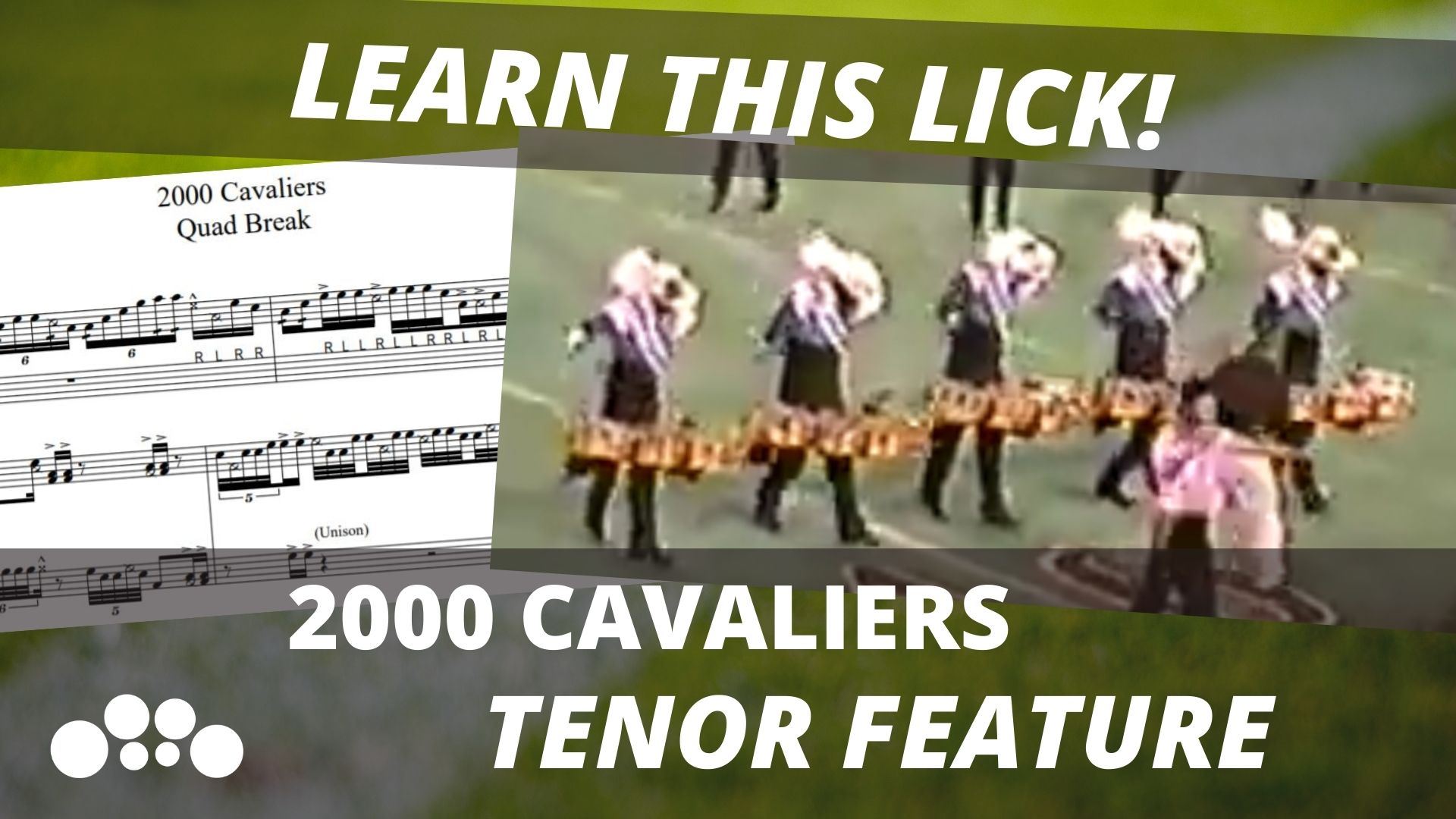I am so excited to start the “Learn this Lick” series of videos and posts. There has been such incredible tenor drumming going on, it will be my absolute pleasure to learn it.
It’s no fun if I’m the only one learning them though. I want YOU to learn them with me.
Some of the notes are straight forward, but there are plenty of passages that can be very tricky rhythmically, and how do you know if you are interpreting them correctly?
We will walk through the music together, taking things slowly, and really getting the notes solidified in our hands correctly.
Before you know it, we will be up to show tempo and throwing down.
2000 Cavaliers Tenor Feature
We start with one of my personal favorites. A bit of a classic, now that it’s two decades old, but this tenor solo was one of my biggest inspirations to march with The Cavaliers.
The drumline won their second consecutive Fred Sanford Trophy in 2000 as well as the DCI Championship with their show Niagara Falls.
I absolutely love this show, and that 1st place finish marked the beginning of the “Roaring 2000’s” for The Cavaliers. From 2000-2008, the corps won 5 titles and placed no lower than third in the DCI Championships.
I digress, back to the lick.
First, I have to show you this rep from a finals week rehearsal. It is so clean! No offense to the deeper tuning that lines now use, but those cranked heads from early 2000’s are completely unforgiving when it comes to cleanliness. These guys do an amazing job!
Now, let’s take a look at the Lothype transcription. It includes some five-lets that didn’t make it to finals week.
A couple notes:
- the sticking is R-L-L-L on count 4 of measure 1
- Also, the five-let at the beginning of measure 4 is left lead and doesn’t go up to drum 1 until the two 16th notes
Here’s a clip from DCM where they play the original version of the lick.
It starts off with 3 counts of six-tuplets with various diddles and accents. At tempo, the drags are nice and crispy, coming up to the shot drums and finishing with a five-stroke roll. Make sure to get nice height definition between the accents and taps.
Ending the measure with a rim shot and R-L-L-L eighth notes, we transition to a 16th/32nd note feel.
This is a fun pattern with the inverted rolls and well-placed accents. I especially like how it goes down to drum four with two accents and then over to drum three. It seems to come out of nowhere for me.
The third and fourth measures are the iconic section of the solo, when the tenor line plants their feet and has the full spotlight.
First, there’s the split double stops and paradiddlediddles, complete with head movements, then into the 32nd-note singles across the drums.
The one tricky part timing-wise is the shot-drum paradiddlediddle on the 2nd split part. It’s a six-tuplet but starts on the “e”. To time this correctly, switch on the eighth-notes on your met but think of them as 16th’s. Now this paradiddlediddle begins on the “and” of beat 3 (measure is now 8 beats long). Get it?
Once you have it in your hands, switch your mind back to the actual way to count it. Your hands will remember what to do.
Have fun with this oldie but goodie!
If you want to hear some more from this incredible drumline, check out Charlie Poole’s tape from Semi-Finals.
If you like what you see and want to help out financially, consider contributing to my PATREON ACCOUNT.
Want to stay in touch? Fill out the form below and never miss a beat!

